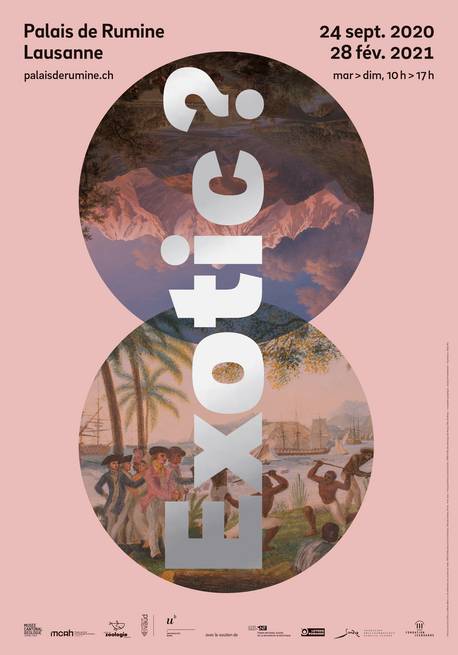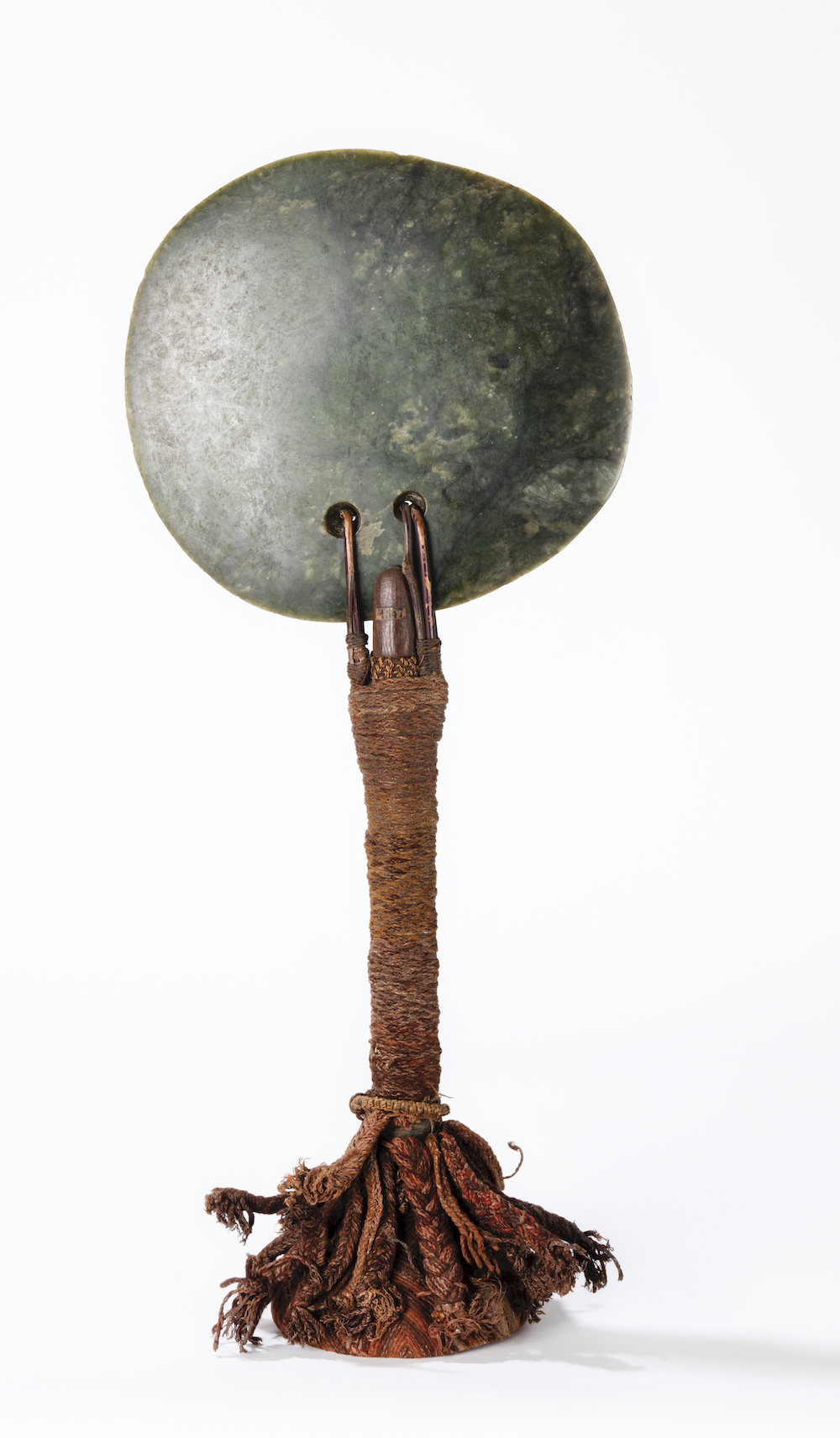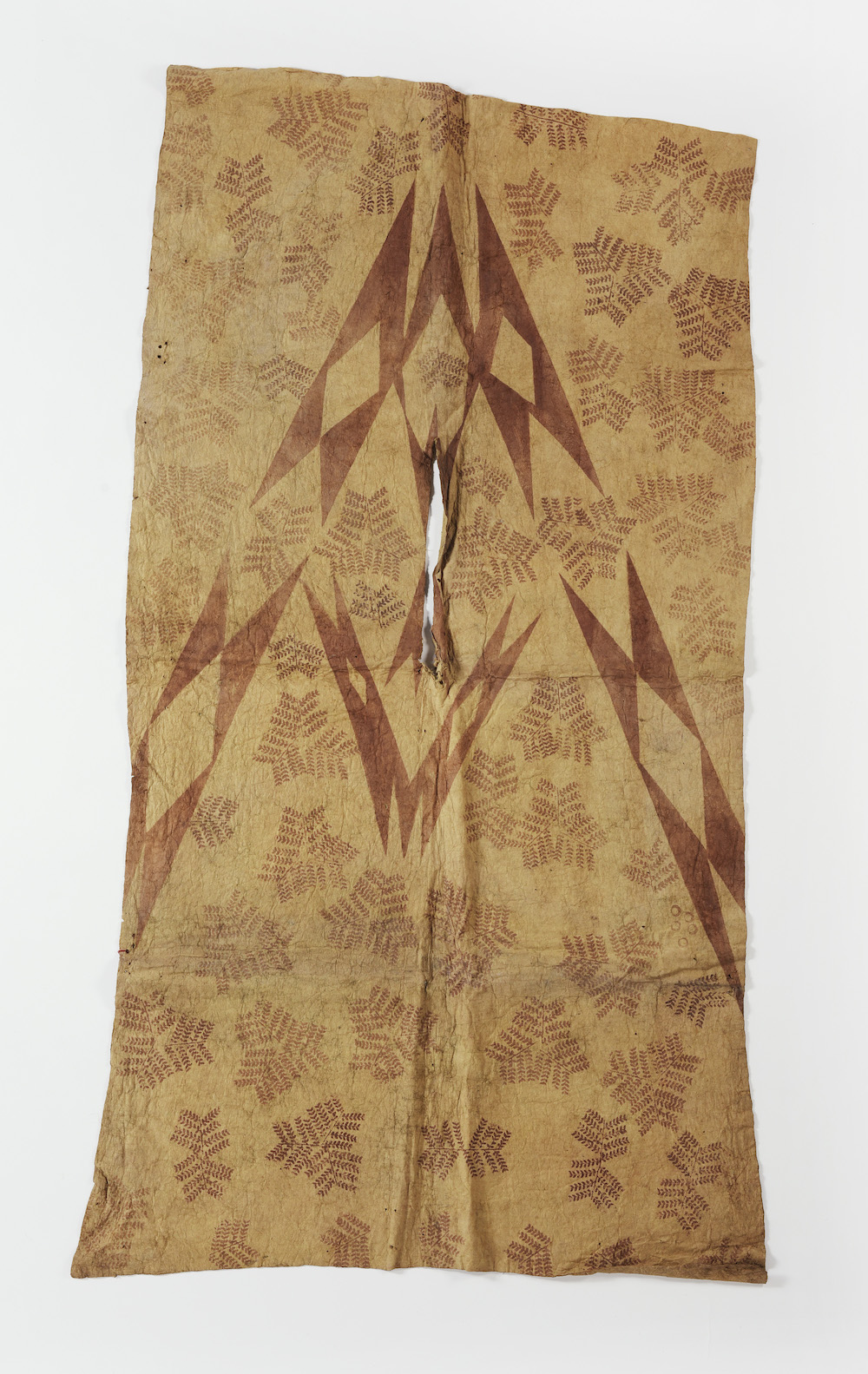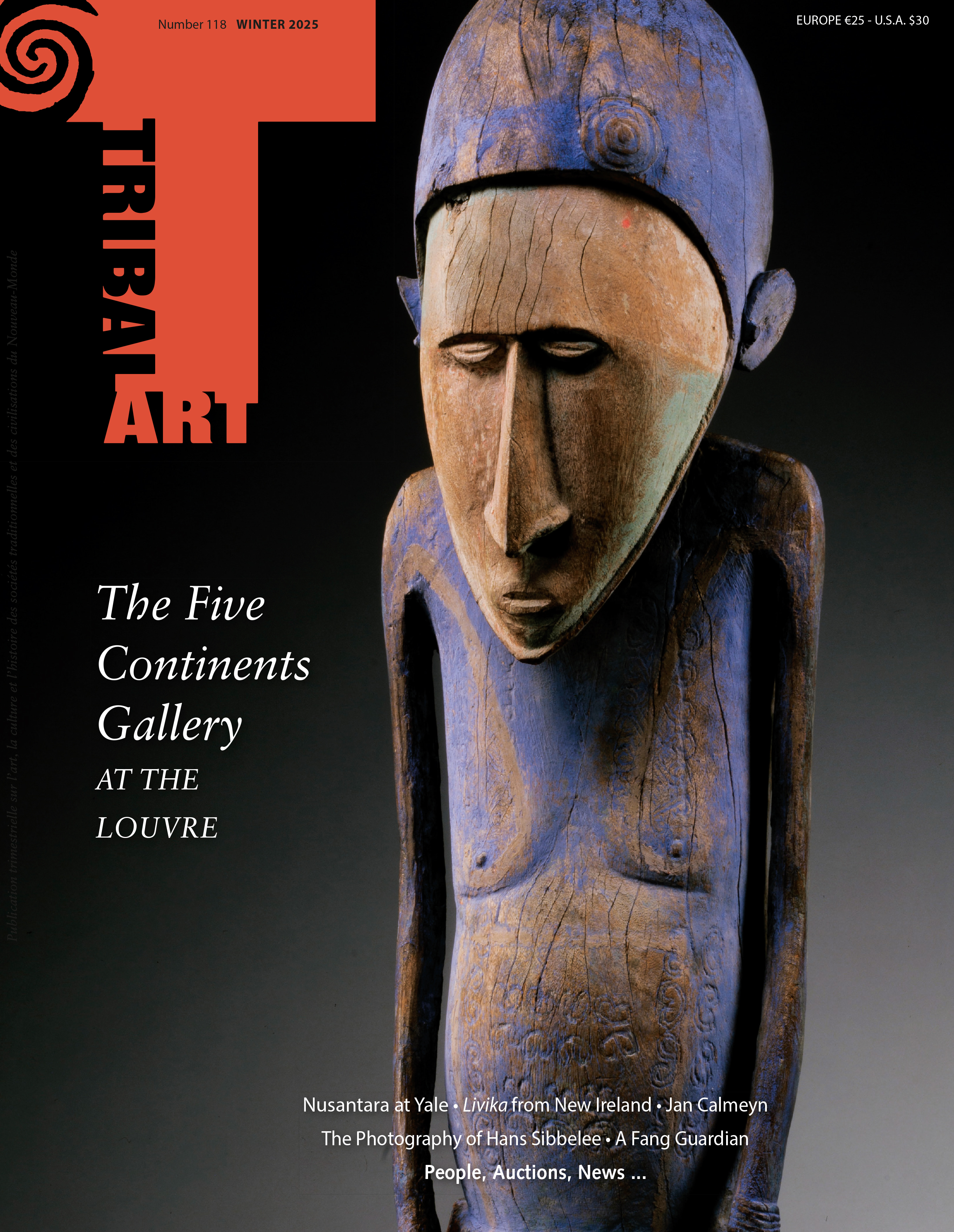Exotic? Switzerland Looking Outward in the Age of Enlightment

The sumptuous temporary exhibition galleries of Lausanne’s Palais de la Rumine—a nineteenth-century Florentine-style building that today houses three history and science museums as well as a library—is the venue, from September 24, 2020, through February 26, 2021, for an interdisciplinary exhibition examining the notion of the “exotic” and Switzerland’s place in history and in the world within this context.
For more information see our extensive article published in our 97th issue.
Practical Information:
Exotique? Regarder l’ailleurs en Suisse au siècle des Lumières
September 24, 2020–February 26, 2021
Palais de la Rumine, Lausanne
http://www.palaisderumine.ch
Selection of pieces presented in the exhibition with captions from the curators:

ABOVE: So-called “monstrance axe,” gi okono or n’bouet.
New Caledonia, 18th century.
Wood, stone, tapa, vegetal fiber, flying fox fur.
H: 57 cm.
Probably collected on the expedition led by Antoine Bruny d’Entrecasteaux.
Ex Jules Paul Benjamin Delessert Collection, donated in 1824. Musée Cantonal d’Archéologie et d’Histoire, Lausanne,
inv. MCAH 04547.
Photo © Yves André.
This axe was given to the Musée Cantonal de Lausanne in 1824 by Jules Paul Benjamin Delessert (1773–1847), a Parisian banker who was originally from Geneva. His gift also included a variety of other objects and seeds, primarily from Oceania.
The widely used term “monstrance axe,” which Europeans used to refer to objects of this type, erroneously identified them as something that could be used as a cutting tool, while at the same time comparing them to an artifact used in the Catholic ritual liturgy. In its original setting, the object’s symbolic presence at important ceremonies (a king’s enthronement, the recitation of a genealogical account, the establishment of a prestigious alliance) distinguished the orator who held it, and it gave weight to the discourse of the elite New Caledonian speakers. This is a characteristic example of how translations can promote the phenomenon of “exoticism,” which we investigate in our exhibition.
ABOVE: So-called tapa “chasuble,” tiputa.
Tahiti, 18th century.
Beaten bast, natural pigments.
154 X 87 cm.
Probably collected on the expedition led by Antoine Bruny d’Entrecasteaux.
Ex Jules Paul Benjamin Delessert Collection, donated in 1824.
Musée Cantonal d’Archéologie et d’Histoire, Lausanne,
inv. MCAH 04616.
© Nadine Jacquet.
Like the “montrance axe” (above), this tiputa tapa was donated by Jules Paul Benjamin Delessert. It was called a “chasuble” by Europeans because of its resemblance to the two-part garment worn by priests for mass. Such a formal comparison to an object associated with Catholicism served only as a point of reference to describe an object unconnected to that world and whose new owners knew nothing about its true function. The fern motif allows us to date the piece to the early contact period with Westerners. The English arrived in Polynesia during the second half of the eighteenth century, and with them came all of their material commodities, including Indian fabrics. There was an appropriation of Indian iconography in Tahiti, which was to become permanently integrated into the traditional Tahitian repertoire.
Nous vous recommandons



